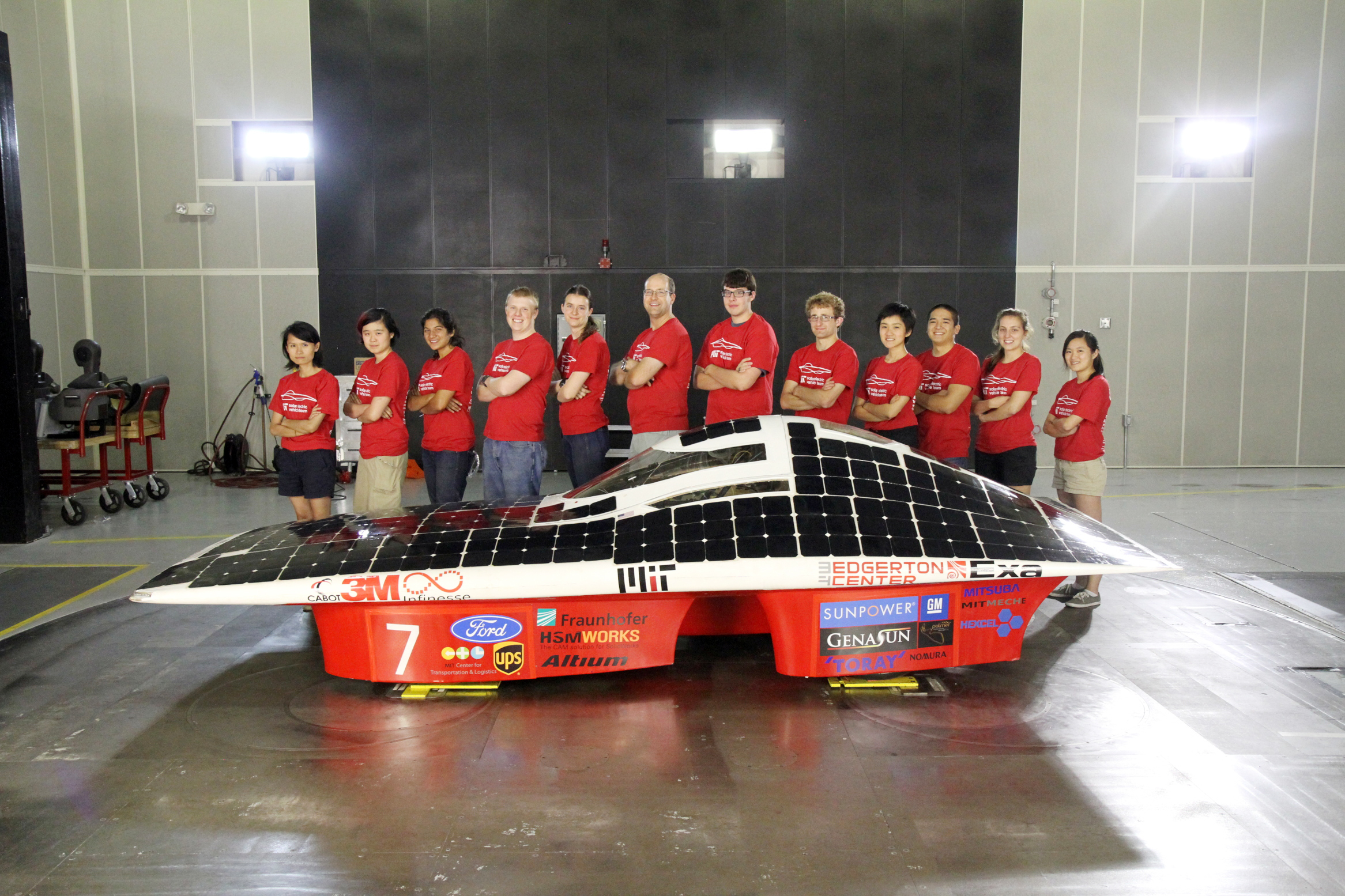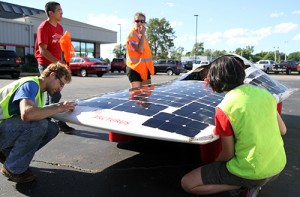MIT Solar Car to Take on Australian Outback
-
-
slice.mit.edu
- 1
Filed Under
Recommended

Caption: Most of the MIT Solar Electric Vehicle Team with this year’s entry, Arcturus.
A team of 17 MIT students and alumni will travel 3,000 kilometers across the Australian Outback in a Solar Electric Vehicle for the Bridgestone World Solar Challenge 2015 starting on October 18. A total of 47 teams from 25 countries—made up of mostly colleges and universities—will compete in the six-day competition that encourages research into sustainable transportation methods as well as solar technology.
This year’s vehicle, Arcturus, was designed and manufactured by the MIT Solar Electric Vehicle Team (SEVT) in just one year as opposed to the usual two-year process. Work on the vehicle, which is completed mostly in MIT’s Edgerton Center, is underway year-round thanks to the contributions of 25 team members. The group is split into three teams, electrical, mechanical, and aerodynamics and composites. Dillon McConnon ’15, who got involved as a first-year student and is currently deferring the start of a full-time job at GM until November to participate as a driver in the challenge, was previously mechanical team lead and this year was the team’s first systems lead—a position they started to help all three teams to create a cohesive vehicle, especially given the short time frame.

Team captain Rose Abramson ’15 also got involved in her first year at MIT and will continue her involvement as she pursues her master’s in electrical engineering. She says that their competition category, the Challenger Class, is most concerned with maximizing efficiency.
“Each year the rules change,” says Abramson. “And over the years it’s become clear that they’re pushing the regulations to make the vehicles less like some sort of Soap Box Derby and making it more similar to the restrictions of a regular car.”
However, if you saw one on the road, you might not agree. And the challenge won’t look much like a regular day on the road either. To cover the Outback in the allotted time, the team’s three drivers—taking six-hour shifts—will need to continuously balance maximum speed and energy efficiency. Although the regulations have allowed for more room for the driver this year, the chassis of the vehicle is still cramped. While the job of the driver is grueling, especially in the heat and terrain of the Outback, the rest of the team has to be equally on their game. “There is a lead car to do the navigation and a chase car where the rest of the team does strategy,” says Abramson. “Even if you’re not driving you have to be very focused. If you’re in the chase car, you’re receiving data from the vehicle and using data from weather and elevation to determine the optimal speed for the car.”
Other changes to race regulations this year included the addition of a fourth wheel in the back of the vehicle, which affected the suspension, electrical system, and changed the aerodynamics of the vehicle. The team has also employed their newly developed solar cell encapsulation process, which should increase the power production of the vehicle and make the solar array more robust and less prone to damage.
A key component of the SEVT is the continual addition of new dynamic members and an equally strong use of knowledge gained through excellent documentation of previous vehicles and utilizing past alumni members. Not only are many alumni consulted for design input, many are still active members of the team, says graduate candidate Kathleen Alexander ’11. “At the end of each phase in design, we hold conference calls with alums saying, ‘hey guys, this is the design we came up with; tell us what we did wrong.’ And they can interject their tips and insights.”
This year, several alumni participated as active members of the team, including Christopher Pentacoff ’06. Since getting involved as a first-year in 2002, Pentacoff has been in a variety of roles including mechanical and aerodynamics systems, solar car driver, and now one of the team mentors. “I've always had a passion for building things, and mentoring the solar car team has let me continue doing that. The real-world skills and experiences that I'd gotten on the solar car team were very valuable to prepare me for industry, and I want to make sure that other students can continue to benefit from experiences like this in the future.”
Similarly, Kelly Ran ’12, MEng ’13, says the skills she learned from SEVT were some she simply couldn’t have gotten the classroom. “Students get the opportunity to design components and assemblies that are too complex and time-consuming to be included in the undergraduate curriculum…I learned schematic capture, PCB layout, enclosure design, complex wiring design, and debugging techniques…[as well as] composite layups, mechanical assembly, fundraising, and budgeting.”
Follow the MIT Solar Electric Vehicle Team on Facebook, Twitter, Instagram, and Flickr and check out their website for more information on their progress.









Comments
Madhav Biradar
Thu, 09/24/2015 2:57am
It is amazing. It will help nature plus human without hurting natural resources. Both nature and human will get benefit from this project. Nice work team.